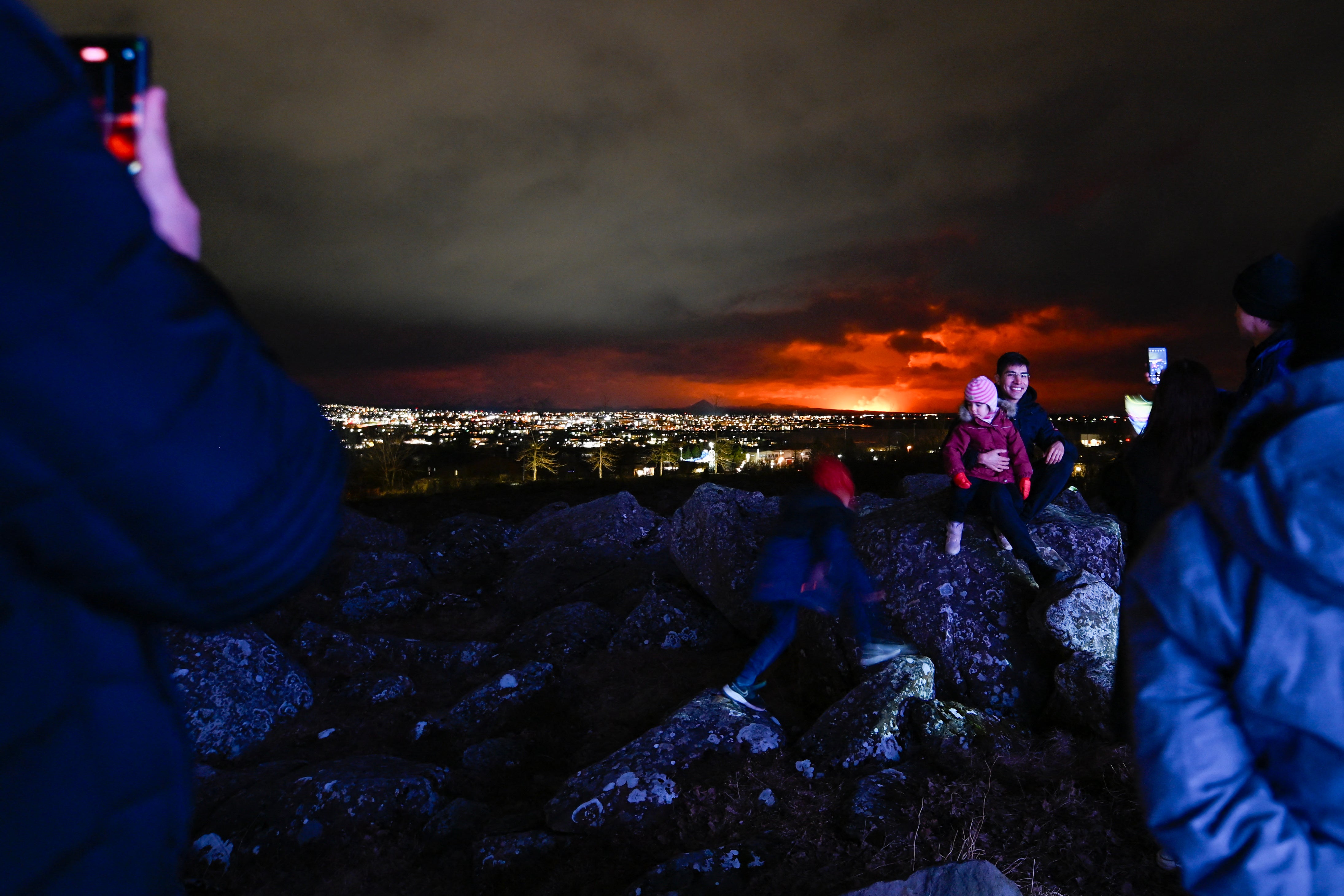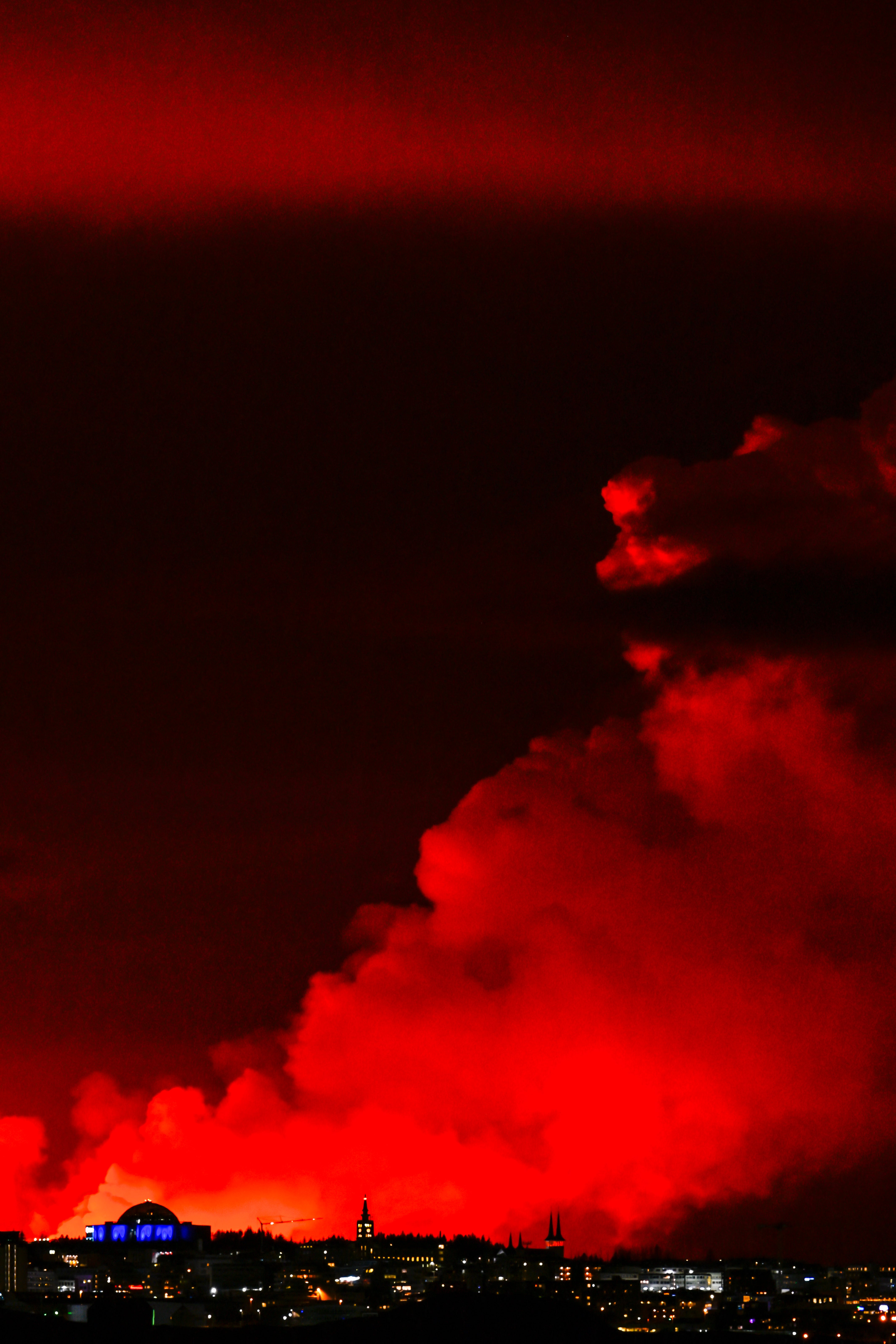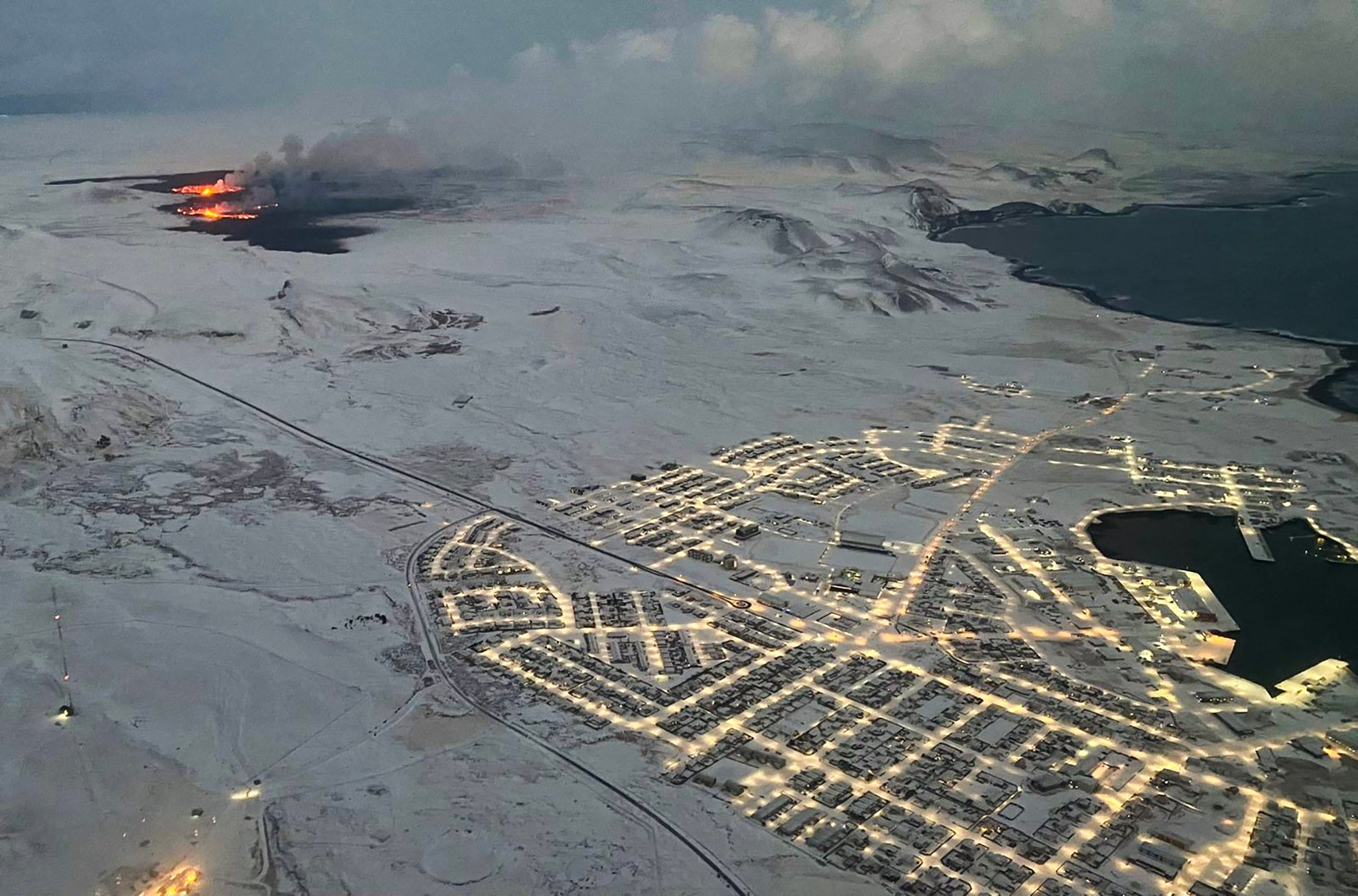Huge volcano erupts again in Iceland spewing bright orange lava into the air
The eruption occured along Iceland’s Reykjavik peninsula, nearby the abandoned town of Grindavik
A state of emergency has been declared in Iceland after a volcano erupted for the fourth time spewing bright orange lava metres into the air.
The dramatic event marks the fourth “alarming” volcanic eruption in three months along the Reykjavik peninsula, nearby the abandoned town of Grindavik.
The Icelandic Met Office said on Saturday night that the fissure had opened as livestreams of the event saw fountains of lava spewing into the sky.
“Warning: An eruption began in Reykjanes,” the Icelandic Meteorological Office said on its website, while Reykjavik’s nearby Keflavik Airport’s website showed it remained open both for departures and arrivals.

Authorities had warned for weeks of an imminent eruption. Iceland’s Civil Protection Agency said prior to the latest explosion: “Since October 24, scientists at the Icelandic Met Office have been monitoring a rise in seismic activity on the Reykjanes Peninsula, which may signal an impending volcanic eruption.
“The heightened intensity of these seismic events, particularly near the town of Grindavík, indicates the potential for volcanic activity in the area.
“As a precautionary measure, the town was evacuated on November 10 to prioritize the safety of its residents. Evacuations will remain in effect until seismic activity subsides.”

Local media reports that residents of the nearby fishing town of Grindavik had been evacuated from the area, having received text messages telling them to leave just minutes earlier.
Grindavik, a town of 3,800 people about 50km south-west of Iceland‘s capital Reykjavik, was evacuated in November when the Svartsengi volcanic system awakened after almost 800 years with a series of earthquakes that opened large cracks in the earth between the town and Sylingarfell, a small mountain to the north.
The volcano eventually erupted on 18 December, sending lava flowing away from Grindavik.
A second eruption that began on 14 January sent lava towards the town.
The volcano last erupted in early February, cutting off district heating to more than 20,000 people as lava flows destroyed roads and pipelines, while an outbreak in January burned to the ground several houses in a fishing town.

Volcanic outbreaks in the Reykjanes peninsula are so-called fissure eruptions, which do not usually cause large explosions or significant dispersal of ash into the stratosphere.
However, scientists fear they could continue for decades, and Icelandic authorities have started building dykes to divert burning lava flows away from homes and critical infrastructure.
Iceland, which sits above a volcanic hot spot in the North Atlantic, averages an eruption every four to five years.
The country boasts more than 30 active volcanoes, making the north European island a prime destination for volcano tourism – a niche segment that attracts thousands of thrill seekers.
The most disruptive in recent times was the 2010 eruption of the Eyjafjallajokull volcano, which spewed huge clouds of ash into the atmosphere and led to widespread airspace closures over Europe.
Join our commenting forum
Join thought-provoking conversations, follow other Independent readers and see their replies
Comments